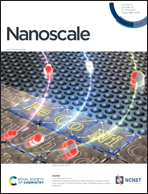Biomineralization of magnetic nanoparticles in stem cells
Abstract
Iron is one of the most common metals in the human body, with an intrinsic metabolism including proteins involved in its transport, storage, and redox mechanisms. A less explored singularity is the presence of magnetic iron in the organism, especially in the brain. The capacity of human stem cells to biosynthesize magnetic nanoparticles was recently demonstrated, using iron released by the degradation of synthetic magnetic nanoparticles. To evidence a magnetic biomineralization in mammalian cells, it is required to address the biosynthesis of magnetic nanoparticles in cells supplied exclusively with non-magnetic iron salt precursors. Herein, mouse and human mesenchymal stem cells were incubated with ferric quinate for up to 36 days. By optimizing the concentration and culture time, and by measuring both total intracellular iron content and cellular magnetic signals, the biosynthesis of magnetic nanoparticles was found to occur from 14 days of continuous iron incubation and was correlated with important doses of intracellular iron. The local electronic structure and chemical environment of intracellular iron were further characterized by XAS spectroscopy at the Fe K-edge, showing a total conversion of Fe2+ to Fe3+ when using ferrous salts (ascorbate and sulfate), and a transformation towards ferrihydrite as well as a small proportion of a magnetic phase.



 Please wait while we load your content...
Please wait while we load your content...